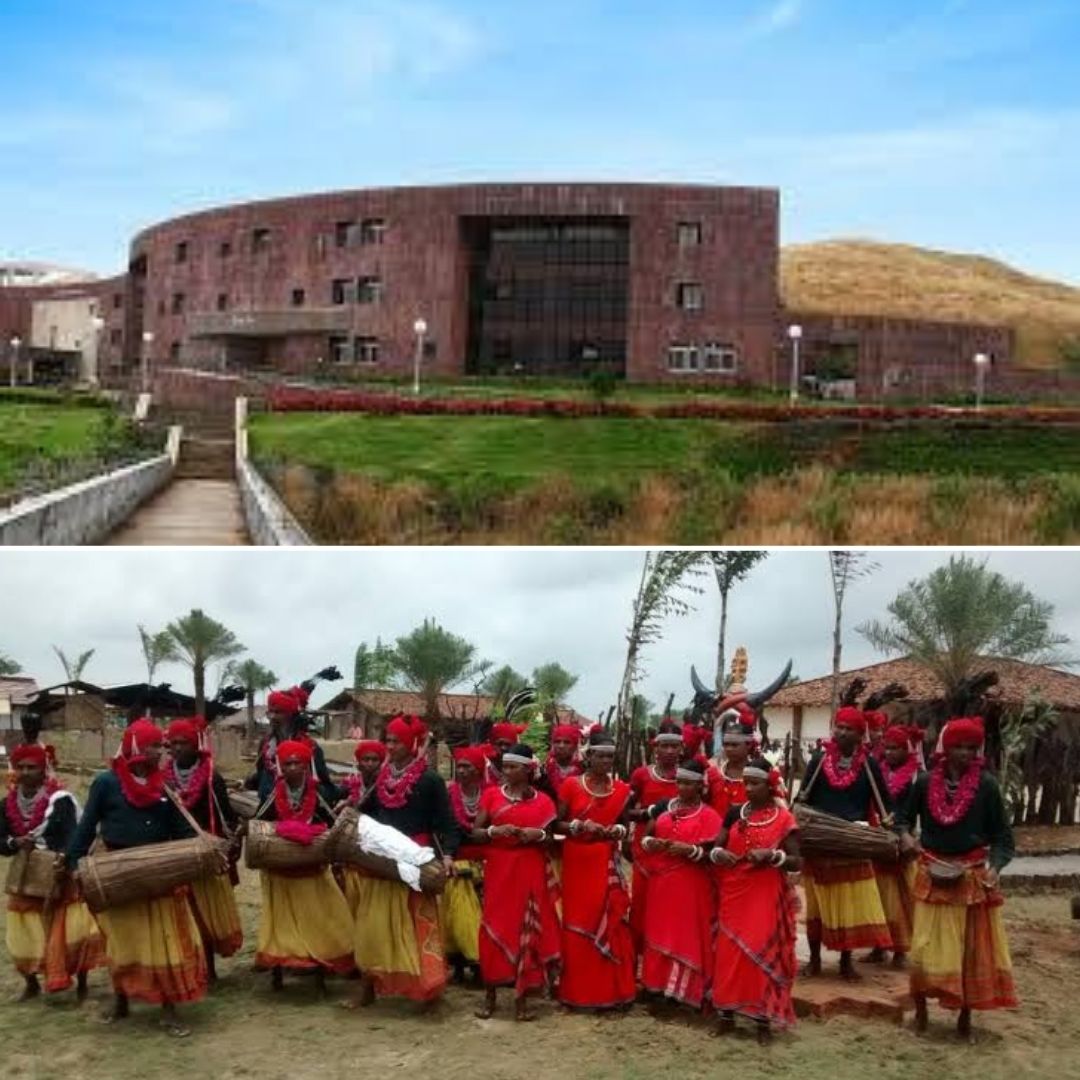
Image Credits: Twitter and UniversityKart
Maharashtra: Largest Tribal Health Surveillance Project 'BLOSSOM' To Kickstart In 18 Villages Of East Vidarbha
Writer: Laxmi Mohan Kumar
She is an aspiring journalist in the process of learning and unlearning many things. Always up for discussions on everything from popular culture to politics.
Maharashtra, 16 Aug 2022 10:50 AM GMT | Updated 16 Aug 2022 10:51 AM GMT
Editor : Snehadri Sarkar |
While he is a massive sports fanatic, his interest also lies in mainstream news and nitpicking trending and less talked about everyday issues.
Creatives : Laxmi Mohan Kumar
She is an aspiring journalist in the process of learning and unlearning many things. Always up for discussions on everything from popular culture to politics.
The Maharashtra University of Health Sciences had announced on World Tribal Day of a large-scale project to screen and provide health surveillance to the tribal communities. As the first step to it, medical investigators will conduct a health study in 18 villages.
In a pilot project covering 18 tribal villages of the east Vidarbha region of Maharashtra, a 90- member team will be dispatched to conduct investigations on the health scenario of the region and find the factors that are leading to a rise in lifestyle diseases.
On the basis of the findings, the three-phased research study would screen the people and work to solve the health concerns of the tribals around the Vidarbha region. Progress of the study and its impact are to be conveyed to the United Nations.
Three-phased Project Work To Resolve Tribal Health Issues
On World Tribal Day, August 9, the Maharashtra University of Health Sciences (MUHS) announced the launch of the largest tribal health surveillance project in the state, BLOSSOM. As per the project, the screening goes beyond a general checkup and will detect any traces of breast cancer, liver and lifestyle diseases, oral cancer, sickle cell disease, sexually transmitted infections, osteoporosis and malnutrition among the residents, which gives the project the acronym BLOSSOM. The first phase of screening and investigations is key to the rest of the project, which would then present data and set a plan of action to ensure better health conditions and provisions for the tribals.
Under the banner of the MUHS, State Tribal directorate, and a few others, the screening aims to cover over 11,000 tribals residing in Chandrapur-Gadchiroli, Deori-Gondia and Ramtek-Parseoni belts of east Vidarbha. The six village belts that have been identified so far constitute more than 95 per cent of tribals in the population.
A 90-member team, including medical officers, associate professors, specialists, medical students and paramedics, will make visits to the villages to study the right common diseases found prevalent among the tribal communities. The multidisciplinary and multimodal research format will kickstart the pilot project with the idea of studying their practices relating to culture, religion, superstitions, and other so on, which impact their food habits as well as contribute to the ailments in tribal villages. It will be conducted under the mentorship and supervision of the MUHS' vice-chancellor Lt Gen Madhuri Kanitkar, the tribal development department, Gondwana University, and the Laxmanrao Mankar Trust.
As per a report by The Print, the process will be divided into three phases - screening, surveillance, and a blend of solution and service.
The first phase of screening will be initiated from September 1st and will go on until October 30th. The population would be screened for the eight commonly occurring illnesses. MUHS' regional coordinator Dr Sanjeev Chaudhary confirmed that teams of 21 people each had been formed for conducting the screening procedures, and they would comprise professors and associate professors who specialise in the field of homoeopathy, Ayurveda and allopathy, project officers from the tribal development department, sevikas from the anganwadis, medical students, pathologists and a few teachers from the Laxmanrao Mankar trust.
Once the screening is completed, the data generated will be stored in the MUHS' regional centre. This would pave the way for the second phase, where a research council of doctors and lecturers of medical colleges would analyse the data to make inferences and suggest appropriate measures.
By the third phase, these inferences would be discussed with expert health consultants who would deduce the underlying causes of the diseases and provide solutions. "We will convert these suggestions and solutions into recommendations and bring out a white paper on tribal health, which will then be presented to the Centre and President of India," added Dr Chaudhary.
For the following three years, the project will be followed up consistently in this pattern by students of the national service scheme of the MUHS. They would be tasked to monitor the project and ensure the services reach the beneficiaries. The impact of the project would then be conveyed to the United Nations.
Aimed At Ensuring HealthCare To Every Last Person
Dr Chaudhary noted that India's adivasi's form 8.7 per cent of the country's population and make up the third largest tribal population in the world. The government had put forth several measures to ensure that tribal healthcare is handled efficiently. However, he states that,
"Despite the government's best efforts and schemes, tribals have not been weaned off of their old lifestyle, which involves superstitions, taboo practices and certain food habits, among other things,".
In order to tackle this concern from the grassroots, the MUHS launched the project BLOSSOM to study the health concerns and act accordingly. It was first announced on World Tribal Day in the presence of Union road transport and highways minister Nitin Gadkari, reported Nagpur Today.
The project is believed to be the biggest tribal health surveillance exercise overtaken by any health university in the country, and Gadkari praised the initiative by saying that the benefits of quality healthcare would reach every last person in society. He added, "This is not an easy task to reach the tribal people. Road connectivity is still a major barrier. Building roads in tribal areas is a task. We have to face many obstacles from forest and environment fronts".
Despite the many obstacles playing out as a disadvantage, active efforts are being taken to ensure that the project presents accurate documentation of tribal health in Vidarbha and contributes to strategising effective health measures for these regions in the long run. Multiple units, including professors, governmental officials, and students, would be collaborating to drive the same to success. Since it is an academic research project, a chair of excellence has also been set in place to oversee the progress. Dr Dilip Gode, former VC of Datta Meghe Institute of Medical Sciences, will be heading this post of chair of excellence.
Described as a game-changer in the tribal health scenario by Dr Choudhary, this research project would later expand to other regions if found to be fruitful.
Also Read: Healthcare For All! Odisha To Come Up With India's 'First' Tribal Health Observatory
 All section
All section














